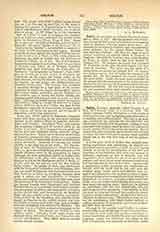

Galilei, ALESSANDRO, an eminent Florentine architect; b. 1691; d. 1737. Having attained some distinction, he was invited by several noblemen to accompany them to England, where he resided seven years. Afterwards he returned to Tuscany and was appointed state architect by the Grand Dukes Cosmo III and Giovanni Gastone. He does not seem to have erected anything remarkable either in England or Tuscany. His abilities, however, were made manifest at Rome, to which place he had been invited by Clement XII. He designed the facade of S. Giovanni de’ Fiorentini (1734), and the great facade of S. Giovanni in Laterano. The latter was the result of a competition set on foot by Clement XII. Of twenty-one designs sent in, that of Galilei was accepted and carried out. He also designed the Corsini chapel in the same edifice. Galilei has been much criticized on the ground that his arrangement of the orders was not correct, but his treatment of the ornamental parts is considered admirable. He was well versed in mathematics, and possessed many other valuable acquirements.
THOMAS H. POOLE

